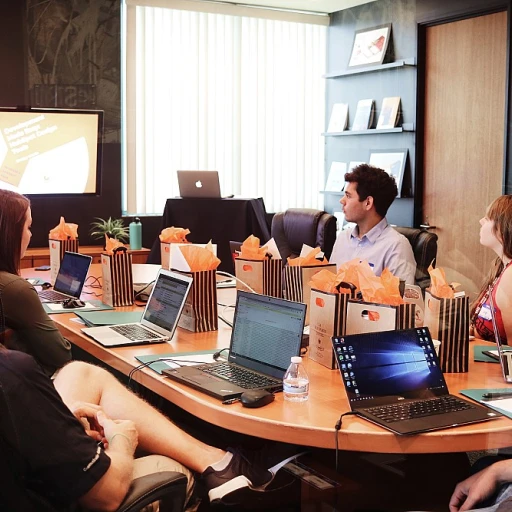Understanding Leader Competencies in the Army
Navigating Leader Competencies in Military Contexts
In the esteemed realm of army leadership, understanding leader competencies is foundational to cultivating effective command and achieving strategic goals. Army leaders are expected to embody a range of competitive skills and possess a robust leadership model that informs their actions and decisions. At the core of army leadership are specific competencies and attributes that define and distinguish effective leaders from the crowd.
The leadership requirements model is a comprehensive framework that highlights the critical components necessary for leaders to succeed in the army. This includes exhibiting core competencies, such as presence, intellect, and character, which are vital in shaping the command environment and influencing subordinates and team dynamics. These competencies help in building the necessary character and presence that army leaders must leverage to inspire confidence and instigate action among their soldiers.
With a focus on leadership development, the army emphasizes three core components that every leader must master:
- Character: Upholding the army values and fostering a strong ethical foundation.
- Presence: Demonstrating commanding authority through confidence and resilience.
- Intellect: Applying critical thinking and effective decision-making skills.
These competencies and attributes are not solely inherent; they must be actively developed and nurtured through targeted training programs and strategic reskilling initiatives. By understanding these competencies, army leaders can effectively chart their development journey and enhance their leadership potential.
Significantly, understanding leader competencies is not only about self-improvement but also about contributing to the broader organizational goals and missions. Successful army leaders are those who continuously strive to meet these enhancing skills for better productivity requirements, ensuring that both their personal growth and the development of their soldiers are prioritized.
The Importance of Reskilling for Army Leaders
Reskilling: A Development Imperative for Army Leaders
The success of army leaders is crucial, given their role in maintaining high standards of leadership and fostering unity within their teams. Reskilling in the army is not just desirable; it's a necessity that underpins the leadership requirements model. This model outlines the essential competencies and attributes that army leaders must embody to ensure effective leadership across multiple levels.
Leadership development in the army focuses significantly on addressing the dynamic nature of military environments. As the battlefield evolves, so too must the competencies of those leading soldiers. The army places great emphasis on core competencies that include leadership, decision-making, and strategic thinking.
Reskilling aims to enhance these leadership requirements by focusing on areas such as:
- Character and Presence: Army leaders need to project authority and embody the core army values. Reskilling in this area ensures leaders consistently meet the high standards of conduct expected in the army.
- Intellect and Decision-Making: Developing the intellect of a leader is vital. This includes enhancing skills related to critical thinking and problem-solving, which are crucial in making informed decisions under pressure.
- Interpersonal Competence: Effective leaders manage and lead people well, whether subordinates or peers. Building these competencies involves honing attributes such as empathy, communication, and emotional intelligence.
The leadership model employed by the army recognizes the necessity for continuous development through targeted reskilling. This approach not only helps army leaders meet existing leadership competencies but also prepares them for future challenges. This type of training helps leaders develop new skills while refining existing ones, thereby reinforcing their ability to lead effectively.
Reskilling is integral to bridging the gap between current capabilities and the evolving demands of leadership in the army. By focusing on these competencies and attributes, the army ensures its leaders are well-equipped to guide their teams effectively, supporting both individual and collective success.
Identifying Key Reskilling Areas
Focusing on Priority Areas for Enhanced Leadership
In the evolving landscape of army leadership, identifying key reskilling areas for leaders is paramount. The army's unique environment necessitates a leadership model that aligns with its distinct requirements. Therefore, effective leaders must consistently align their learning and development around core competencies.
Identifying the specific areas for reskilling can significantly contribute to the growth of army leaders. The emphasis is on developing attributes such as character and presence, which are intrinsic qualities within the army's leadership requirements model. This enhances the ability to make sound decisions, especially under pressure, and to foster a resilient team.
To help leaders navigate this progression, focusing on the following three core areas is crucial:
- Competencies and Attributes: Core to the leadership model, competencies such as effective communication, decision-making, and adaptability play a pivotal role. Leaders develop these attributes to effectively lead subordinates and soldiers.
- Intellect and Character Presence: The synergy of intellect and character presence shapes an effective leader. Developing these attributes fosters a principled approach that aligns with army values, ultimately leading to effective leadership and stronger team dynamics.
- Leadership Development Programs: Well-structured programs are essential for ongoing leadership development. They encompass training components designed to refine skills and competencies, preparing leaders to address current and future challenges in dynamic environments.
Incorporating these elements into the reskilling strategy not only complements the competencies army leaders need but also fortifies the leadership development pipeline. For more insights on how leaders and teams can enhance their skills through specific programs, visit
this blog on accountability training.
Overcoming Challenges in Reskilling Army Leaders
Addressing Barriers in Army Leader Reskilling
Reskilling Army leaders to enhance their competencies comes with its share of challenges. As we explore this crucial transformation, it's important to acknowledge the hurdles that can impede progress.
One of the primary challenges is the rapid evolution of warfare technology. As technological advancements emerge at a brisk pace, army leaders must adapt their existing skills to stay abreast. This requires a flexible mindset, where attributes like intellect and character are continually honed to meet future demands.
Moreover, leadership models within the army have traditionally emphasized hierarchy and discipline. Adapting these models to embrace reskilling can sometimes create resistance among leaders who are accustomed to conventional approaches. To combat this, it is essential to foster an environment that encourages continuous learning and values the intellectual growth of its leaders.
Another barrier is resource allocation. Successful reskilling programs hinge on the availability of time, personnel, and financial resources. Ensuring that these resources are sufficiently provided can be a daunting task, especially when short-term operational requirements take precedence.
A key consideration in overcoming these challenges lies in understanding the leadership requirements model. The army leader must embody core competencies that not only address the needs of the present but anticipate future leadership demands. Such competencies enhance team dynamics by fostering effective communication, presence, and character.
Finally, creating a culture of collaboration and shared objectives can significantly ease the process of reskilling. When leaders develop a shared vision with their teams, it bolsters the army's commitment to nurturing effective leaders who embody army values. This alignment can be pivotal in shaping army leadership development and ensuring that subordinates are equipped with the attributes necessary for success.
While challenges in reskilling Army leaders exist, addressing them with strategic foresight and collaborative spirit can pave the way for dynamic leadership. This adaptability ensures that leaders are prepared to tackle the evolving landscape of military requirements effectively.
Successful Reskilling Programs in the Army
Examples of Effective Leadership Development Programs
Army leadership development programs play a critical role in enhancing the competencies and attributes necessary for effective leadership. These programs ensure leaders meet the dynamic challenges of the modern battlefield by honing their intellect, character, and presence. One program that stands out is the Army Leader Development Strategy. This strategy is designed to systematically develop leaders and helps maintain a high level of proficiency across the three core competencies — leading, developing, and achieving.
To address the requirements of leadership in the Army, these programs often include elements of both theory and practical application. This dual approach ensures that army leaders are prepared both intellectually and physically to meet the needs of their teams and subordinates on and off the field. An effective leader is not only characterized by their decision-making abilities but also by their ability to inspire and motivate soldiers.
Reskilling Leaders to Adapt to Modern Battlefield Challenges
Modern warfare requires leaders to be adaptable, seeking not just to follow a model of past successes but to innovate and evolve. Programs have started integrating new sales techniques—applicable to strategic operations—to teach leaders to influence and negotiate effectively. This reskilling is pivotal as army values evolve to meet new global strategic demands.
Furthermore, attributes of presence and intellect are deeply embedded in reskilling initiatives, equipping leaders to face asymmetric threats and complex environments. Understanding and developing these competencies in tandem with technological integration ensures leaders are not only effective but also relevant.
Harnessing Feedback for Continuous Improvement
Feedback mechanisms are integral to these programs, allowing for the continuous improvement of leadership competencies. When leaders understand their strengths and areas for development, they can engage in more targeted training that enhances their effectiveness. With robust feedback systems in place, army leaders can align with the demands of their roles, ensuring they meet the set leadership requirements efficiently.
Overall, successful reskilling and leadership development programs in the army are those that adapt to changing requirements, leverage feedback, and focus on building competencies and attributes that ensure leaders remain effective in the diverse and dynamic situations they encounter.
Future Trends in Army Leadership Reskilling
Anticipating the Future of Army Leadership Development
The landscape of army leadership is ever-evolving. As such, the requirement for effective leaders to adapt and embrace new competencies is critical. Looking ahead, we can anticipate several trends that will shape the future of reskilling within the army.
Firstly, with the increasing reliance on technology, army leaders will need to develop strong digital skills. Digital agility not only enhances operational efficiency but also ensures that leaders can make informed decisions swiftly. Leveraging new technologies will become a core competency, distinguishing leaders who can effectively manage and lead in highly dynamic environments.
Another key area of focus is the integration of holistic approaches to leadership development. Emphasizing mental resilience and emotional intelligence will be crucial. Future leaders will have to support their teams beyond conventional military tasks, enhancing their presence and demonstrating effective leadership. Cultivating such attributes helps in fostering a robust army leadership model that aligns with both personal growth and team development.
The emphasis on diversity and inclusion as part of the army leadership model will gain more traction. Effective leadership will be characterized by leaders who can understand and integrate diverse perspectives, enhancing team cohesion and capability. Such competencies in army leaders will not only help meet the evolving demands but also align with broader societal values.
Finally, future reskilling strategies in the army will increasingly focus on collaborative learning models. Creating environments where leaders can learn from one another's experiences will contribute significantly to leadership development. By evolving together, leaders can collectively align their development with the leadership requirements set forth in the army values.
In summary, the future trends in army leadership reskilling prioritize adaptability, diversity, digital competence, and collaborative learning. By nurturing these competencies, the army ensures its leaders are thoroughly prepared for the challenges that lie ahead.














